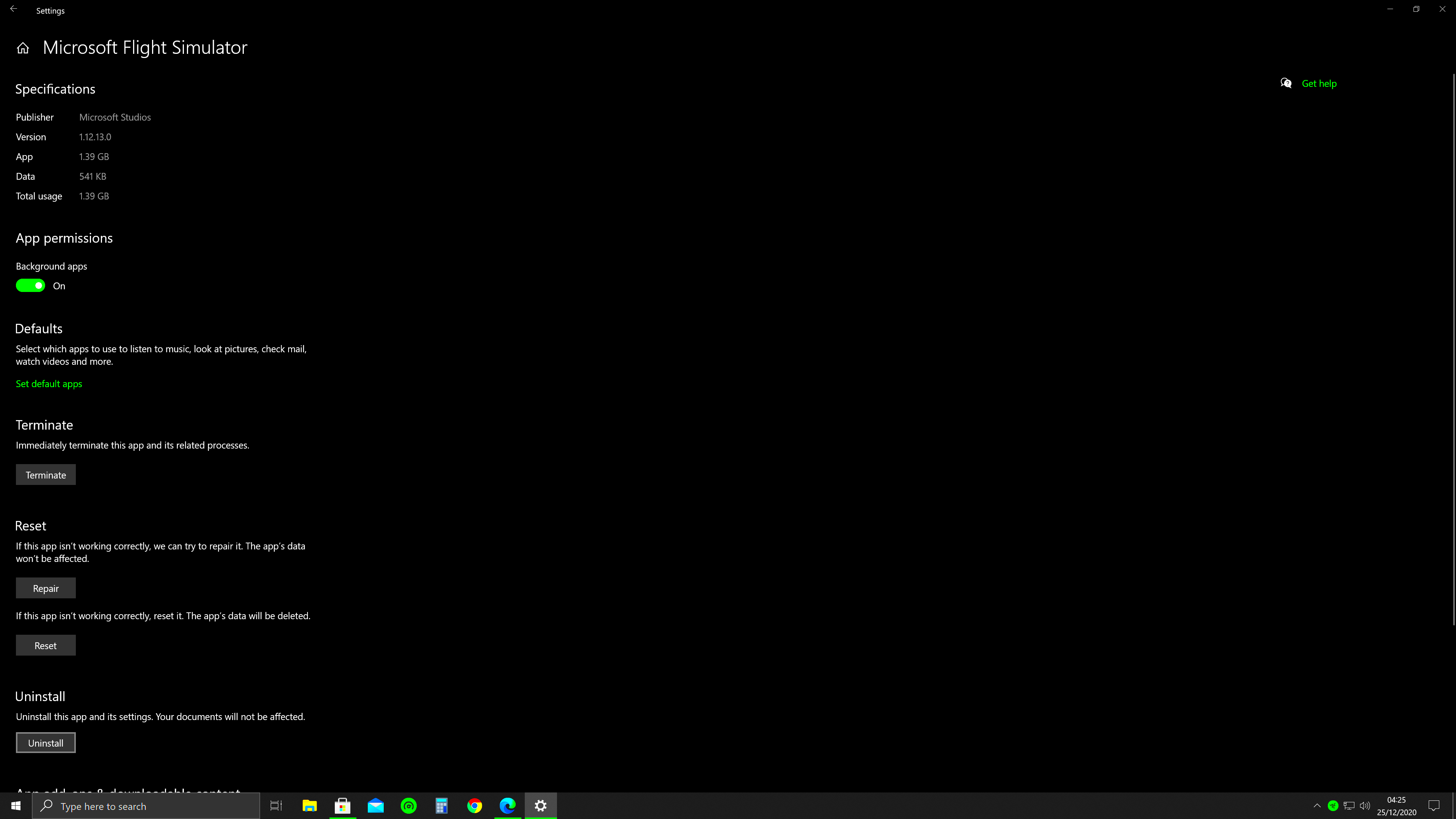Microsoft Flight Simulator 2020 stands out as an incredibly realistic and immersive flight simulation game. Its meticulous recreation of the entire planet is simply astonishing. I still recall the moment I started the game and felt like I was entering the cockpit of a real aircraft.The breathtaking experience of soaring above well known cities and stunning landscapes is truly enchanting. However as much as the allure of flying through the skies is captivating there may come a time when you feel the urge to uninstall the game. And that's perfectly normal – circumstances shift and preferences change.
Why You May Want to Uninstall Microsoft Flight Simulator 2020

Isn't it amusing how we grow fond of specific games? Yet there comes a moment when removing them could be the choice. One factor could be the game size. With updates it can consume a portion of your storage sometimes exceeding 100GB! I recall facing a dilemma between retaining Flight Simulator or clearing up space for work related documents. Priorities, you know? Another reason could be related to performance challenges. If your computer struggles to run the game seamlessly frustration sets in and spoils the enjoyment.You might have found other games to enjoy or lost some of the thrill you once felt for flying. Or maybe, like me, you’ve come to the conclusion that life is requiring more of your attention and fitting in Flight Simulator with its expansive landscapes and extensive gameplay time has become challenging. No matter what your reason is it’s worth noting that removing the game isn’t necessarily a negative choice; it simply opens up room for something fresh.
Preparing for Uninstallation: Things to Consider
Removing
Microsoft Flight Simulator 2020 isn’t just a matter of pressing a button. There are some factors to consider before moving forward. For starters if you’ve invested time in personalizing your routes, aircraft and preferences it’s wise to create a backup. Losing your progress can be quite disappointing. Trust me I’ve experienced this firsthand – picture losing all your advancements without having made a backup!Additionally consider the extra storage you’ll free up. With all the updates and detailed scenery packs Flight Simulator requires a significant amount of space. When it’s uninstalled you might be taken aback by how much storage becomes available for other uses. Perhaps you can finally get that video editing program you’ve been wanting to try out!Finally take some time to think back on your time spent playing the game. Did it offer you any insights? For me Flight Simulator was more than just a game; it was an adventure. I gained knowledge in geography, aviation and even the art of patience (those lengthy flights, right!). If you’re considering soaring through the skies again in the future make sure everything is set up for a seamless reinstallation. After all uninstalling doesn’t equate to bidding farewell, forever.
How to Uninstall Microsoft Flight Simulator 2020 on Windows
Uninstalling
Microsoft Flight Simulator 2020 from your Windows computer is similar to tidying up after an extended holiday. You have to make sure everything is stored away correctly to avoid leaving anything behind. Allow me to guide you through the process one step at a time.
- Open the Start Menu: Click on the Windows icon at the bottom-left corner of your screen.
- Access Settings: Click on the gear icon to open Settings.
- Navigate to Apps: In the Settings menu, select “Apps” to see a list of all installed applications.
- Find Flight Simulator: Scroll through the list or use the search bar to locate “Microsoft Flight Simulator 2020.”
- Uninstall the Game: Click on it, and you’ll see an “Uninstall” button. Click it and follow the prompts to remove the game from your PC.
Here’s a suggestion based on what I’ve encountered; when you uninstall a program it can leave some residual files behind. It’s similar to discovering crumbs after finishing a meal. Therefore, I advise taking a look at your local disk for any leftover files in the “Program Files” directory. Removing these can help create more space and make sure that nothing is left over.
How to Uninstall Microsoft Flight Simulator 2020 via Xbox App
If you've been utilizing the Xbox app to handle your games removing
Microsoft Flight Simulator 2020 via the app is a simple task. Here's a step by step guide on how to accomplish it:
- Open the Xbox App: Launch the Xbox app on your Windows PC. It’s where you manage your Xbox Game Pass and other games.
- Go to My Library: In the app, navigate to “My Library” to see all your installed games.
- Find Flight Simulator: Locate “Microsoft Flight Simulator 2020” in the list of games.
- Uninstall the Game: Right-click on the game, and select “Uninstall” from the options. Confirm your choice when prompted.
Uninstalling games through the Xbox app is super easy as it takes care of all the game files for you. It’s great to have a single hub to manage everything, similar to having a dedicated spot for your go to spices in the kitchen.
Clearing Remaining Files and Optimizing Disk Space
Even after you remove a program from your computer there may still be some lingering files that take up valuable storage. By getting rid of these you can free up that much needed disk space. Here's what you can try doing.
- Check for Leftover Files: Go to the “Program Files” and “Program Files (x86)” folders on your C: drive. Look for any folders related to Flight Simulator and delete them.
- Remove Temporary Files: Open the Disk Cleanup tool by searching for it in the Start Menu. Select your C: drive and check “Temporary files” to clear out unnecessary data.
- Use Storage Sense: Windows 10 and 11 have a feature called Storage Sense that automatically clears out files you don’t need. Go to Settings > System > Storage and turn on Storage Sense.
From what I’ve seen keeping your digital setup neat is similar to having a tidy work area. It helps everything run smoothly and creates space for new experiences. If you have any unused files or programs now would be a great moment to declutter. A well arranged virtual environment can significantly impact both efficiency and tranquility.
Reinstalling Microsoft Flight Simulator 2020 in the Future
Uninstalling
Microsoft Flight Simulator 2020 doesn’t mean you’re bidding farewell for good. Life is ever changing and your gaming preferences may eventually swing back to soaring through the virtual skies. Reinstalling the game is a walk in the park and here’s a quick guide on how to jump back in.
- Access the Store: If you originally installed the game via the Microsoft Store or Xbox app, simply open the respective store.
- Search for the Game: Type “Microsoft Flight Simulator 2020” into the search bar to find the game quickly.
- Reinstall: Click on “Install” or “Get” and follow the prompts to download and install the game again. Ensure you have enough storage space before starting the installation.
- Update and Configure: Once installed, check for any updates and configure your settings as you prefer. If you had custom settings or mods, you might need to reinstall or reconfigure them.
Based on what I've seen reinstalling a game can be like reconnecting with a buddy. All those moments spent uncovering adventures and perfecting your skills come flooding back. Its usually wise to revisit and savor the game later on especially when you have time or a fresh setup. The excitement of soaring through the skies again is always something to anticipate.
Frequently Asked Questions
When it comes to removing and reinstalling games such as Microsoft Flight Simulator 2020 there are often several questions that arise. Here are a few frequently asked ones that I have come across.
Will I lose my progress if I uninstall the game?
- No, your progress is usually saved on cloud servers if you’re using an Xbox account. However, it’s always a good idea to back up your settings and customizations manually.
Can I reinstall the game on a different drive?
- Yes, during the installation process, you can choose a different drive for the game’s files. This can be useful if you want to manage your storage better.
What if I face issues after reinstalling?
- If you encounter problems, try updating your graphics drivers and ensuring that your system meets the game’s requirements. Sometimes, clearing cache or reinstalling the game again can help.
Here are a couple of questions that pop up. If you have any concerns, it might be useful to check the official forums or reach out to support for assistance.
Conclusion: Moving Forward After Uninstalling
Removing Microsoft Flight Simulator 2020 is a way to declutter your digital space and create room for fresh experiences. It’s similar to cleaning up a messy room; by clearing out the old you make space for new things and exciting adventures. Personally I’ve discovered that taking a break from something even if it’s just for a while can enhance your enjoyment of it when you return later. Life is all about evolving and so is our journey in gaming.Whether you’re clearing space for titles exploring different hobbies or simply taking a breather dont forget that your passion for flight simulation will always be there to welcome you back. The heavens will be patiently waiting for your return to the skies. So, embrace the shift relish in new adventures and nurture your love for flying for what lies ahead.
 Isn't it amusing how we grow fond of specific games? Yet there comes a moment when removing them could be the choice. One factor could be the game size. With updates it can consume a portion of your storage sometimes exceeding 100GB! I recall facing a dilemma between retaining Flight Simulator or clearing up space for work related documents. Priorities, you know? Another reason could be related to performance challenges. If your computer struggles to run the game seamlessly frustration sets in and spoils the enjoyment.You might have found other games to enjoy or lost some of the thrill you once felt for flying. Or maybe, like me, you’ve come to the conclusion that life is requiring more of your attention and fitting in Flight Simulator with its expansive landscapes and extensive gameplay time has become challenging. No matter what your reason is it’s worth noting that removing the game isn’t necessarily a negative choice; it simply opens up room for something fresh.
Isn't it amusing how we grow fond of specific games? Yet there comes a moment when removing them could be the choice. One factor could be the game size. With updates it can consume a portion of your storage sometimes exceeding 100GB! I recall facing a dilemma between retaining Flight Simulator or clearing up space for work related documents. Priorities, you know? Another reason could be related to performance challenges. If your computer struggles to run the game seamlessly frustration sets in and spoils the enjoyment.You might have found other games to enjoy or lost some of the thrill you once felt for flying. Or maybe, like me, you’ve come to the conclusion that life is requiring more of your attention and fitting in Flight Simulator with its expansive landscapes and extensive gameplay time has become challenging. No matter what your reason is it’s worth noting that removing the game isn’t necessarily a negative choice; it simply opens up room for something fresh.
 admin
admin








